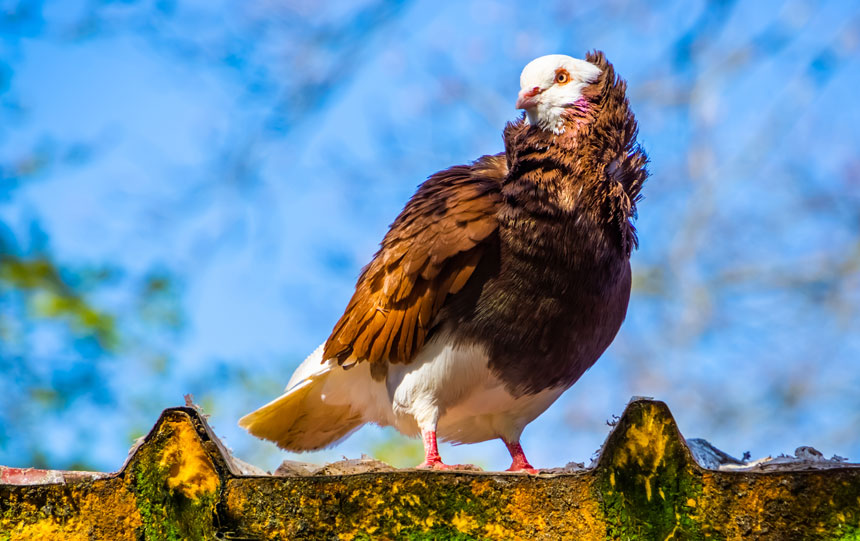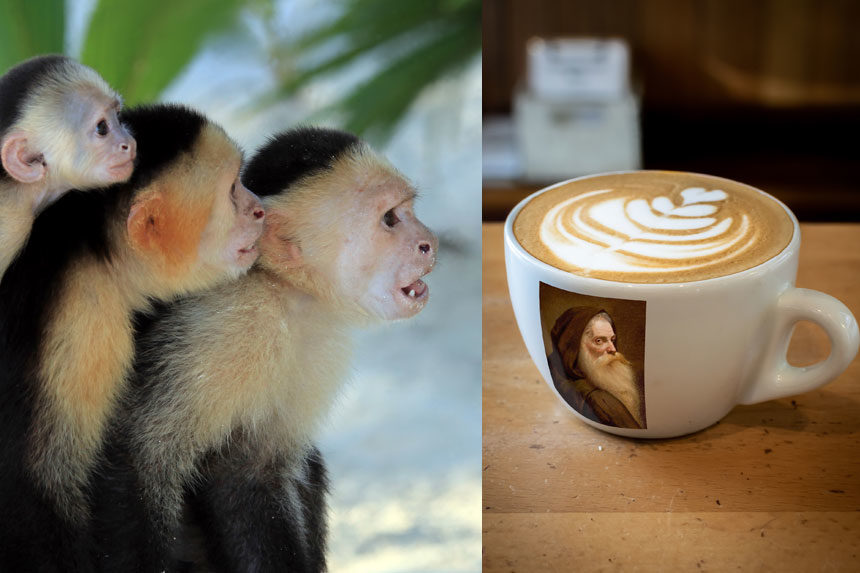Managing editor and logophile Andy Hollandbeck reveals the sometimes surprising roots of common English words and phrases. Remember: Etymology tells us where a word comes from, but not what it means today.
Capuchin monkeys, Capuchin monks, and cappuccino — you probably recognize that these words all come from a common etymological source, but which came first? And besides their etymology, what connects these three otherwise disparate items?
First, let’s start with the source: the Latin word cappa, meaning “head covering.” Cappa is probably derived from the word caput “head,” and yes, when you don a baseball cap, you’re drawing from the same etymological well. An augmentative of cappa — meaning it’s a word indicating a larger head covering — is capuccio, a word that might describe a hood, which is where the fun history starts.
The 16th-century Franciscan friar Matteo di Bascio thought the Franciscan order had strayed too far from the primitive, ascetic life of St. Francis of Assisi. One particular problem, he thought, was that the habits worn by Franciscans weren’t like the ones St. Francis himself had worn. He fashioned a “new” type of old habit, one made of brown cloth and with a pointy, pyramid-shaped hood — called a capuche, from the Latin capuccio. In 1528, with the pope’s approval, Matteo established the Order of Friars Minor Capuchin, named for the brown, hooded habit they wore.
So the monks came first, and the other words came from them.
In the 1780s, Westerners in South America spied some (frankly adorable) small, long-tailed monkeys swinging through the trees. They had brown bodies, but with a white face and chest that gave the overall impression of tiny Capuchin monks in their brown habits and long beards. So they were called capuchin monkeys.
These primates weren’t the only animals that reminded people of Capuchin monks. Aviculturists in the Netherlands, through selective breeding, created the Old Dutch capuchine pigeon, which appears in Dutch masters’ paintings in the 1500s and which, to my eye, looks almost exactly like a dove wearing a tiny Capuchin monk habit.

Outside the animal world, the end of the 19th century saw a craze for coffee, but there was a problem: Good coffee took time to percolate, and customers didn’t always have the time to hang around. Coffee innovators (especially in Italy) experimented with new machines that would get to good coffee quickly, often by the use of boiling water and steam. These innovations would lead directly to the invention of the caffé espresso, or what we know now as just espresso.
Then, with the addition of milk or cream, and then steamed milk or cream, coffee drinkers got their first sips of the modern-day cappuccino, so named because, lke with the capuchin monkeys and Old Dutch Capuchine pigeons, the beverage’s brown color and white foam was reminiscent of the Capuchin monks’ appearance.
That word cappuccino actually dates to much earlier in Italy, where, in the 1700s, it referred to a regular coffee with sugar and cream — again, mimicking the color of the monks’ hood. But that wasn’t what we think of as a cappuccino, and the word itself didn’t find widespread use among English-speaking coffee drinkers until just after World War II.
All thanks to St. Francis of Assisi and his followers.
Featured image: Shutterstock, Shutterstock, and José Ferraz de Almeida Jr. (1874)
Become a Saturday Evening Post member and enjoy unlimited access. Subscribe now




Comments
Really love the opening picture, Andy. Honestly, it looks as if the 3 monkeys are wearing little fur caps of their own! Very interesting how these words are connected with each other, for sure. Saint Francis of Assisi, one of my favorites; patron saint of the animals.
This article almost makes we want a cup of coffee with cream and sugar, if I can make it myself. That’s where Cafe D’Vita comes in, if they have it in decaffeinated. Can’t stand Starbucks bitter, awful and expensive coffee. No way.